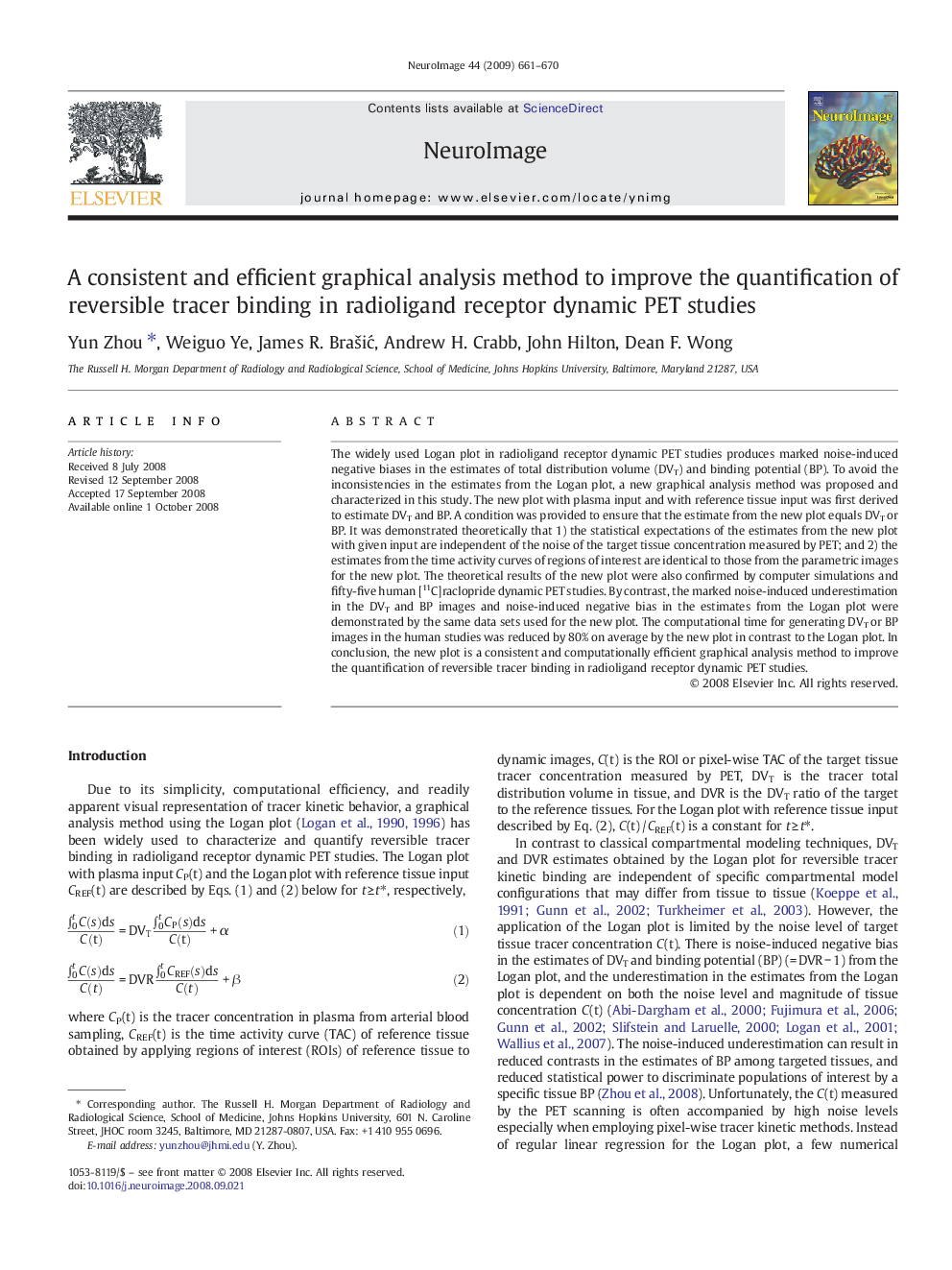| Article ID | Journal | Published Year | Pages | File Type |
|---|---|---|---|---|
| 6038315 | NeuroImage | 2009 | 10 Pages |
Abstract
The widely used Logan plot in radioligand receptor dynamic PET studies produces marked noise-induced negative biases in the estimates of total distribution volume (DVT) and binding potential (BP). To avoid the inconsistencies in the estimates from the Logan plot, a new graphical analysis method was proposed and characterized in this study. The new plot with plasma input and with reference tissue input was first derived to estimate DVT and BP. A condition was provided to ensure that the estimate from the new plot equals DVT or BP. It was demonstrated theoretically that 1) the statistical expectations of the estimates from the new plot with given input are independent of the noise of the target tissue concentration measured by PET; and 2) the estimates from the time activity curves of regions of interest are identical to those from the parametric images for the new plot. The theoretical results of the new plot were also confirmed by computer simulations and fifty-five human [11C]raclopride dynamic PET studies. By contrast, the marked noise-induced underestimation in the DVT and BP images and noise-induced negative bias in the estimates from the Logan plot were demonstrated by the same data sets used for the new plot. The computational time for generating DVT or BP images in the human studies was reduced by 80% on average by the new plot in contrast to the Logan plot. In conclusion, the new plot is a consistent and computationally efficient graphical analysis method to improve the quantification of reversible tracer binding in radioligand receptor dynamic PET studies.
Related Topics
Life Sciences
Neuroscience
Cognitive Neuroscience
Authors
Yun Zhou, Weiguo Ye, James R. BraÅ¡iÄ, Andrew H. Crabb, John Hilton, Dean F. Wong,
